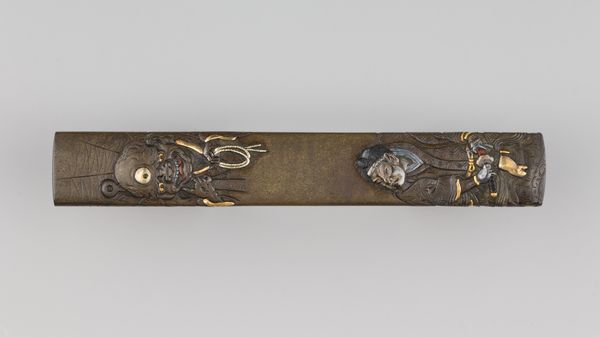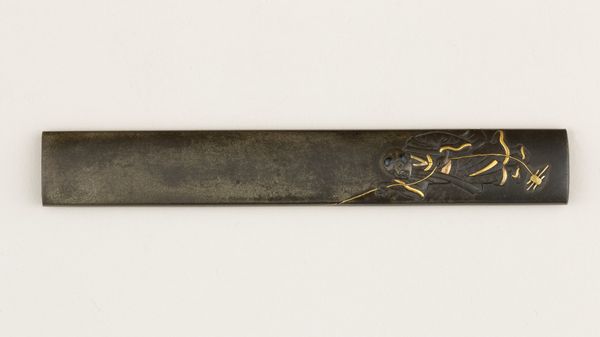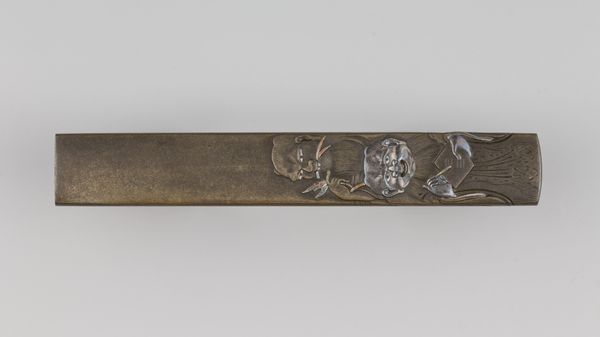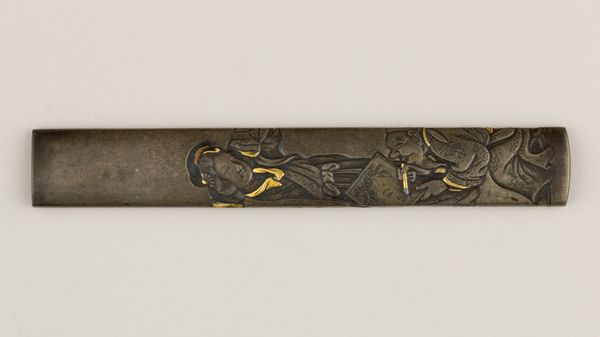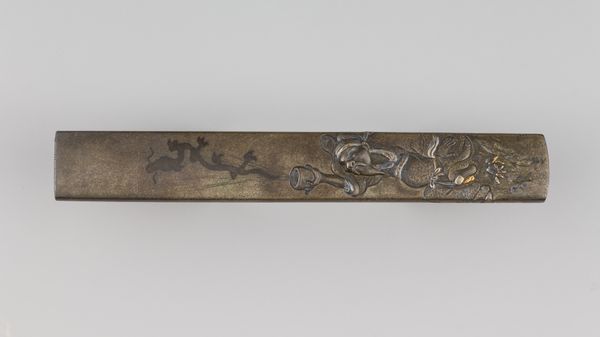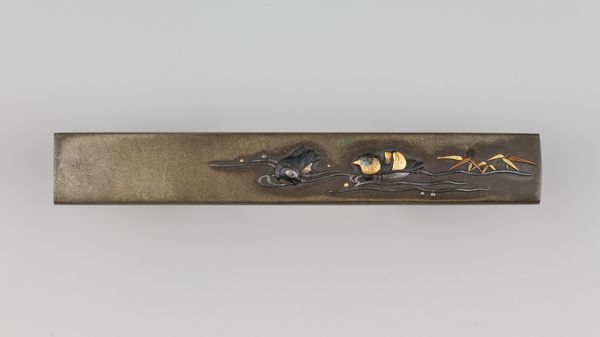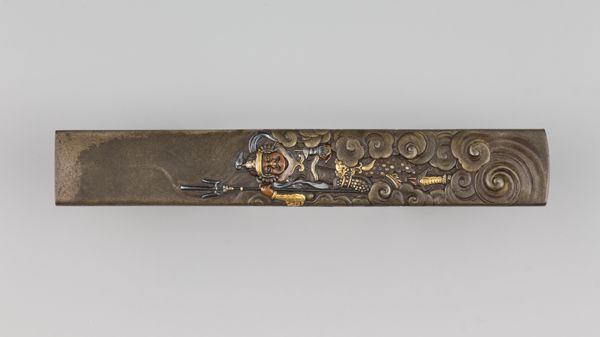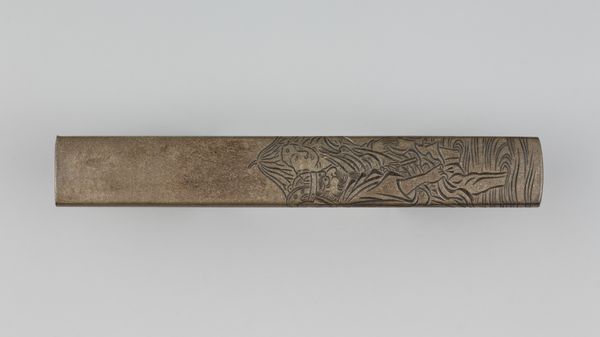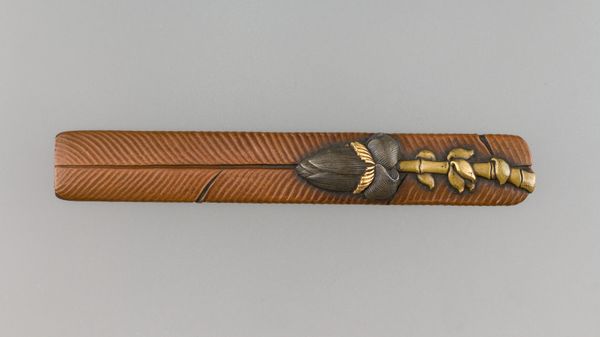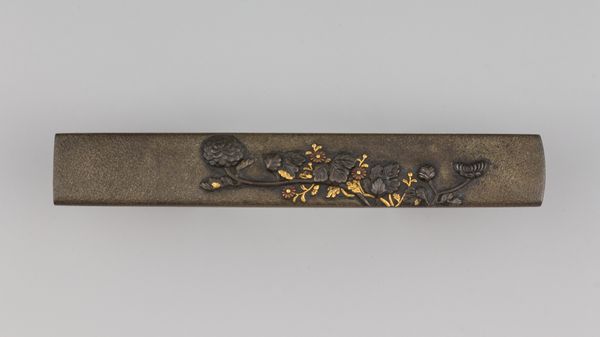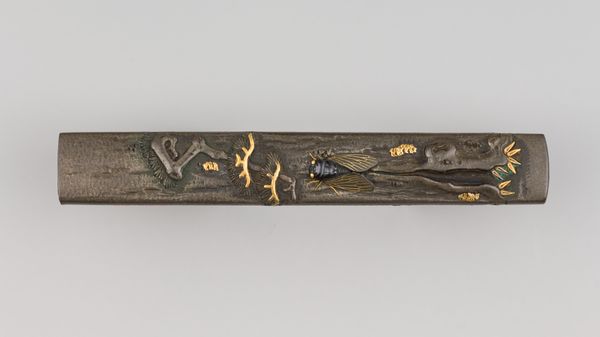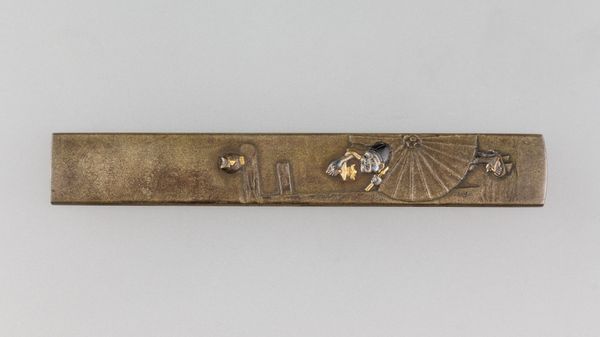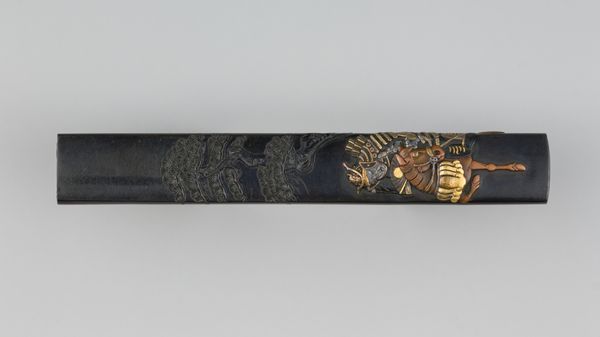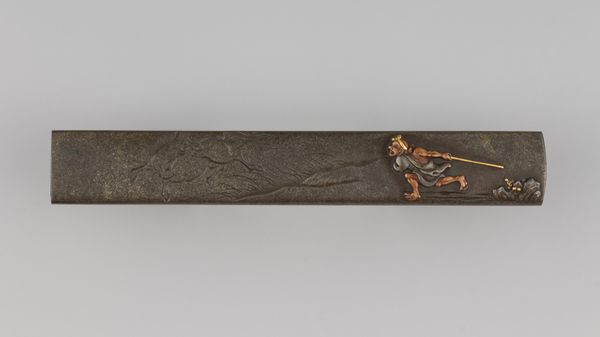
carving, metal, wood
#
carving
#
metal
#
asian-art
#
wood
#
sword
Dimensions: L. 3 13/16 in. (9.7 cm); W. 9/16 in. (1.4 cm); thickness 1/4 in. (0.6 cm); Wt. 1.2 oz. (34 g)
Copyright: Public Domain
Curator: This kozuka, or knife handle, now residing at the Metropolitan Museum of Art, was crafted in 19th century Japan by Hamano Toshihiro. Notice the incredible detail considering that the materials include wood and metal. Editor: Immediately, I'm struck by the menacing figure carved into this small object, and its potent message regarding power and perhaps fear in a hierarchical society. The expression is intimidating. Curator: Absolutely. It’s a fascinating glimpse into the symbolism present in Japanese weaponry. The demon depicted would have had cultural significance; we can understand this not as simply "decoration," but perhaps an appeal for supernatural protection. Editor: Do we know if the image speaks to specific narratives beyond general spiritual protection? Considering the context of swords and status, how did the figure resonate across class lines? Curator: Often, these images are complex. One element might carry auspicious symbolism while others hint at social rank or affiliations within warrior culture. This layered messaging system makes interpreting these objects quite challenging. The small details, however, are incredibly telling. Editor: Looking closely at the demon's clothing, for instance. Is there any indication of status through the specific patterns, or the style of robe itself? How does this item reinforce ideas about leadership, power and male dominance, in Japanese culture at the time? Curator: Costume elements would most certainly convey further context about what narrative the samurai, or person holding it, was attempting to communicate, whether consciously or unconsciously. But those details might have also served as mnemonics within particular schools or clans. The potential stories embedded within are seemingly endless. Editor: Precisely. Seeing this level of detail in this context, allows me to consider the multiple intersections between religious, societal, and individual expressions of belief during the era. A simple yet effective tool to dissect social perceptions. Thank you. Curator: Thank you; contemplating these intersections helps us not only decode this singular object but invites a deeper understanding of its time and the belief system that gave birth to it.
Comments
No comments
Be the first to comment and join the conversation on the ultimate creative platform.
